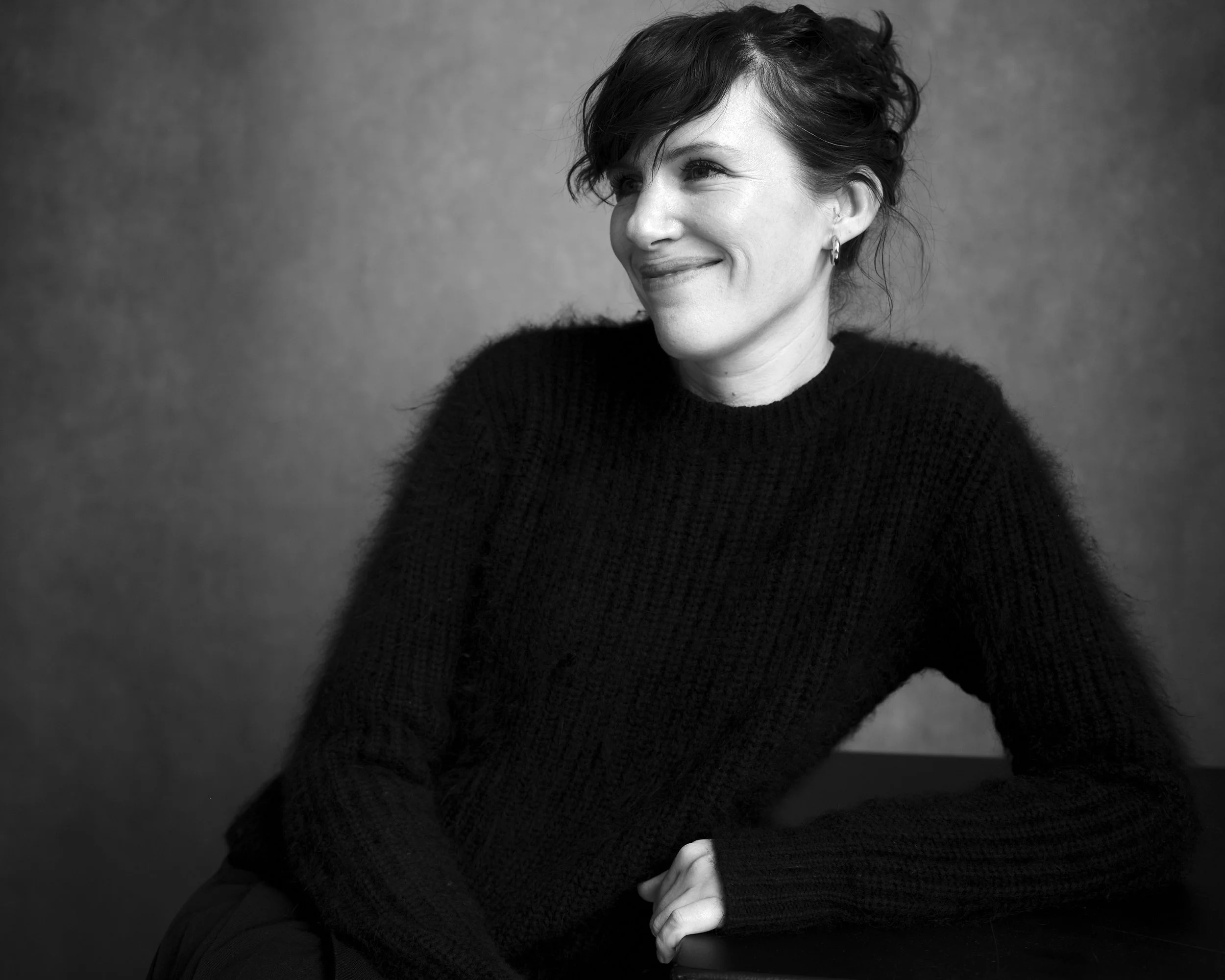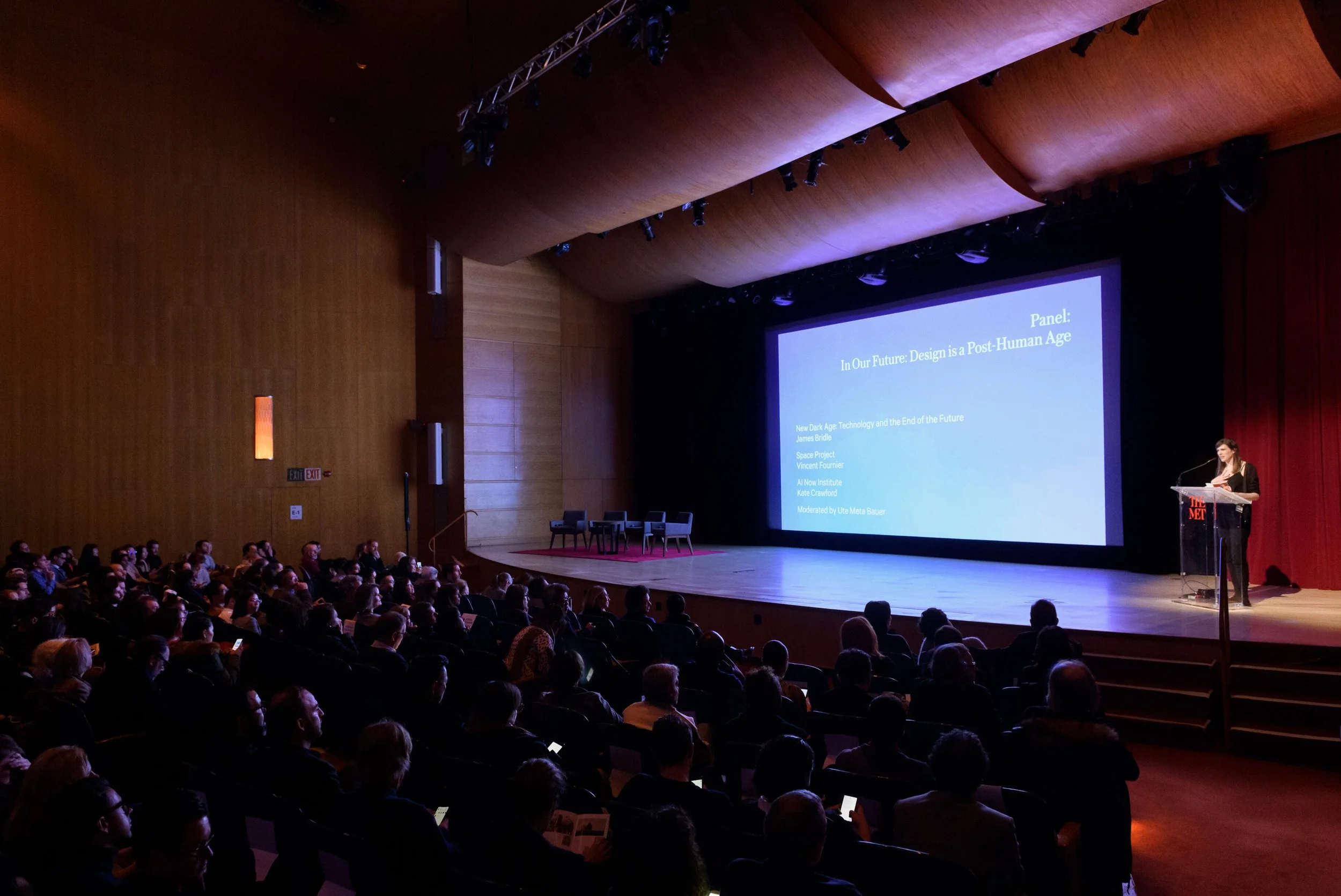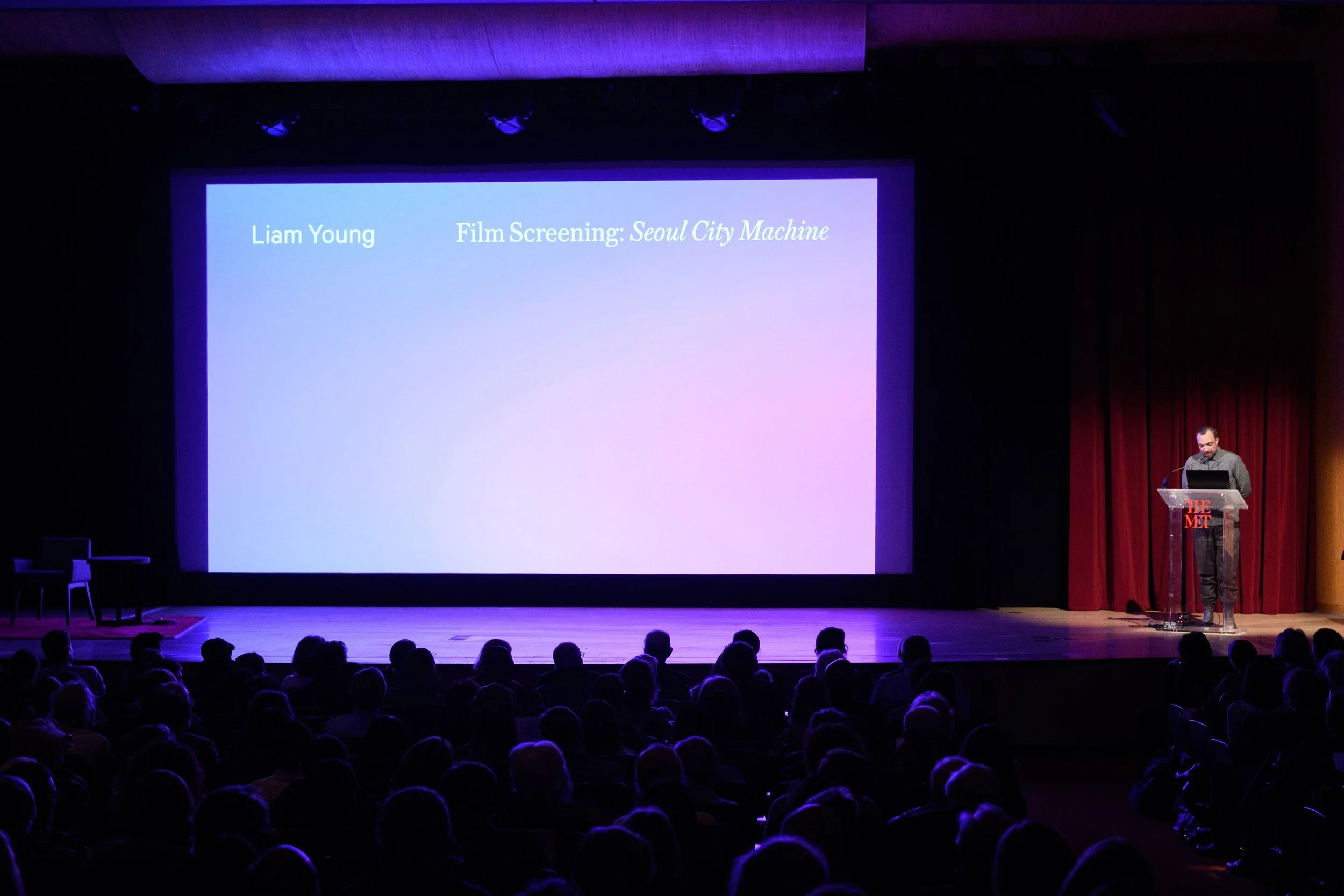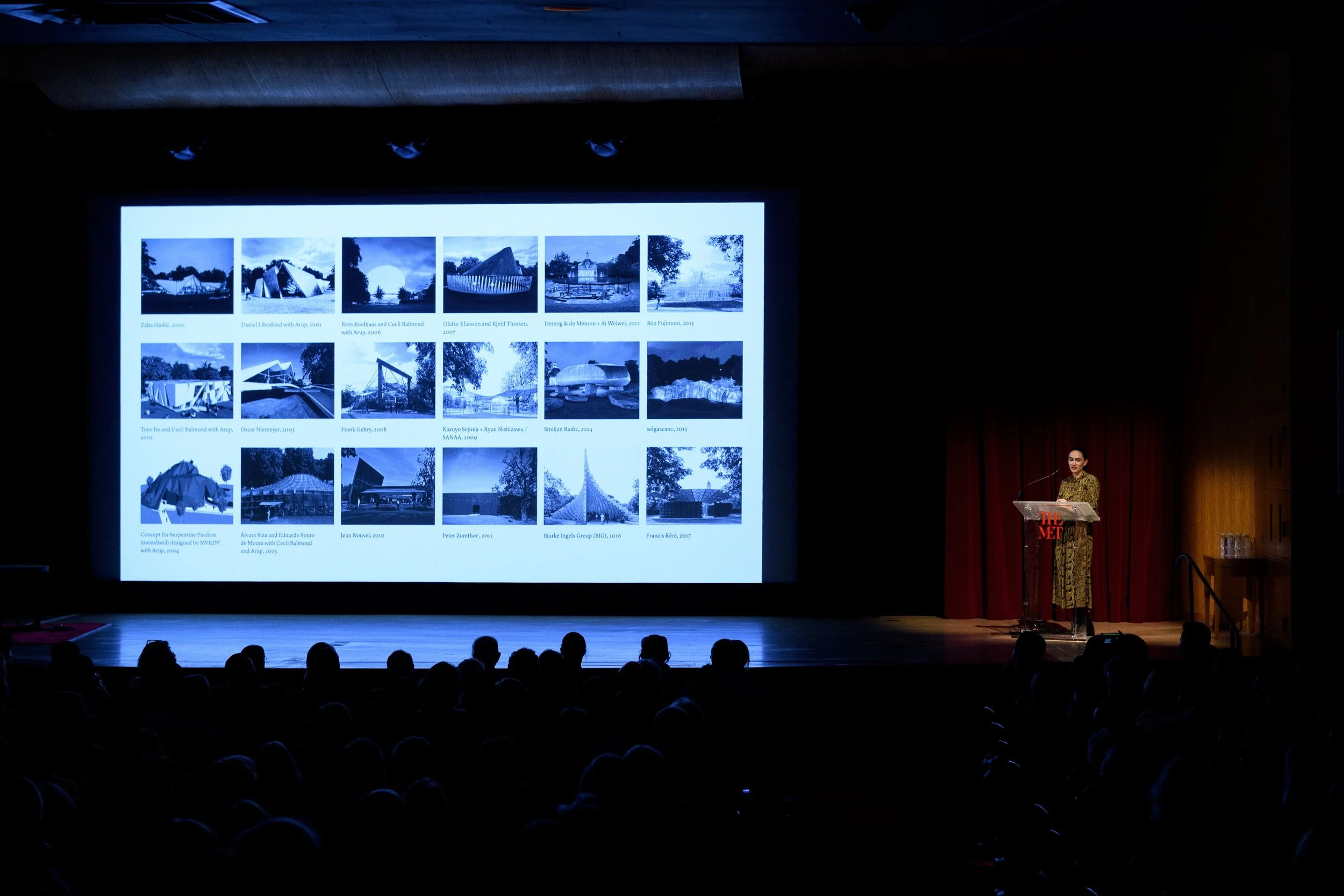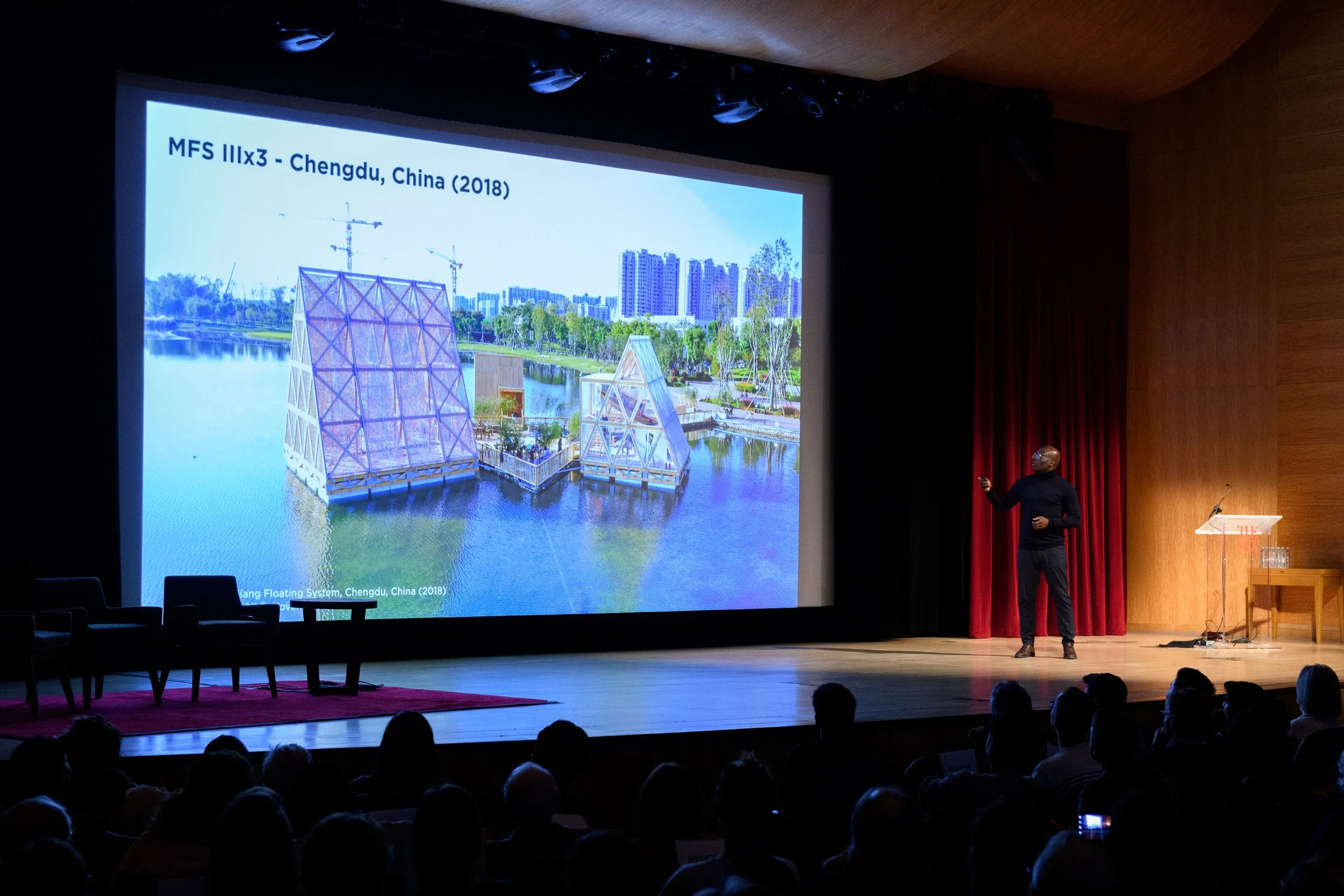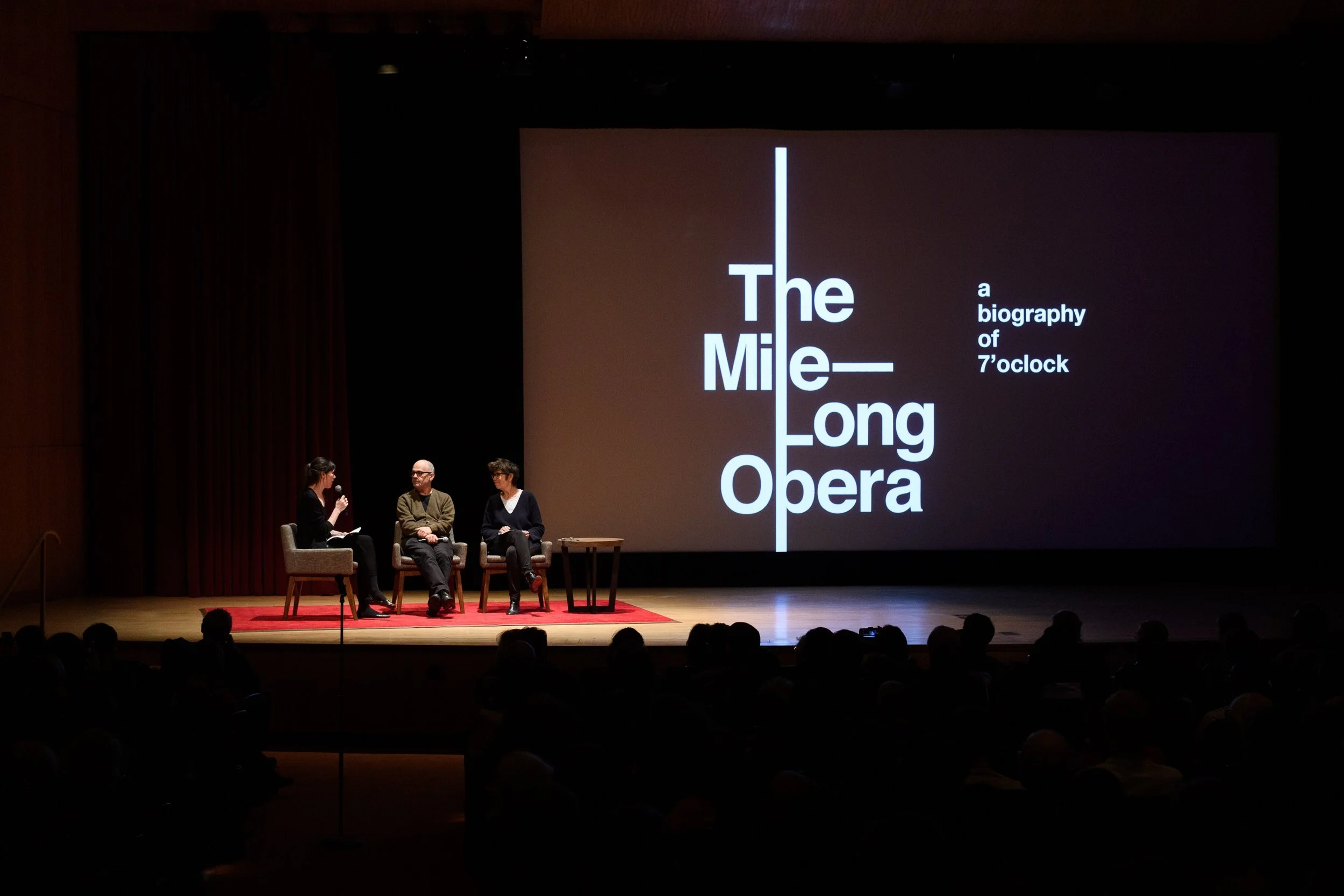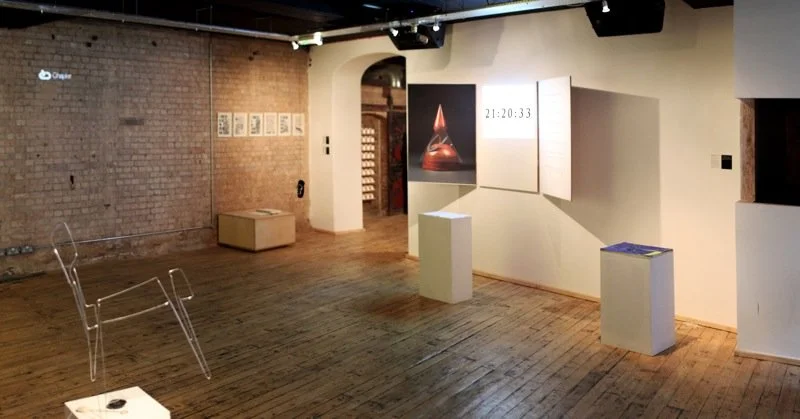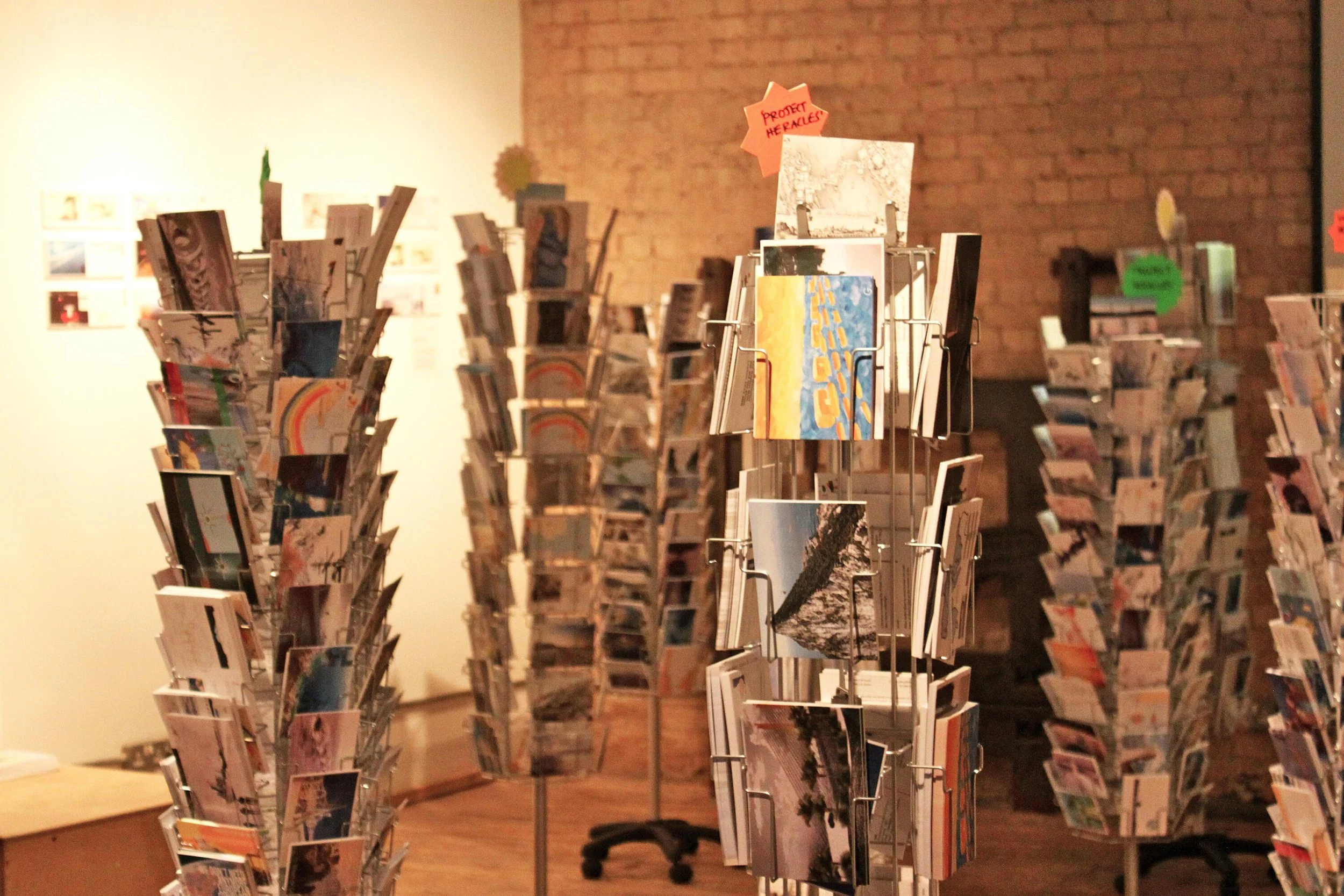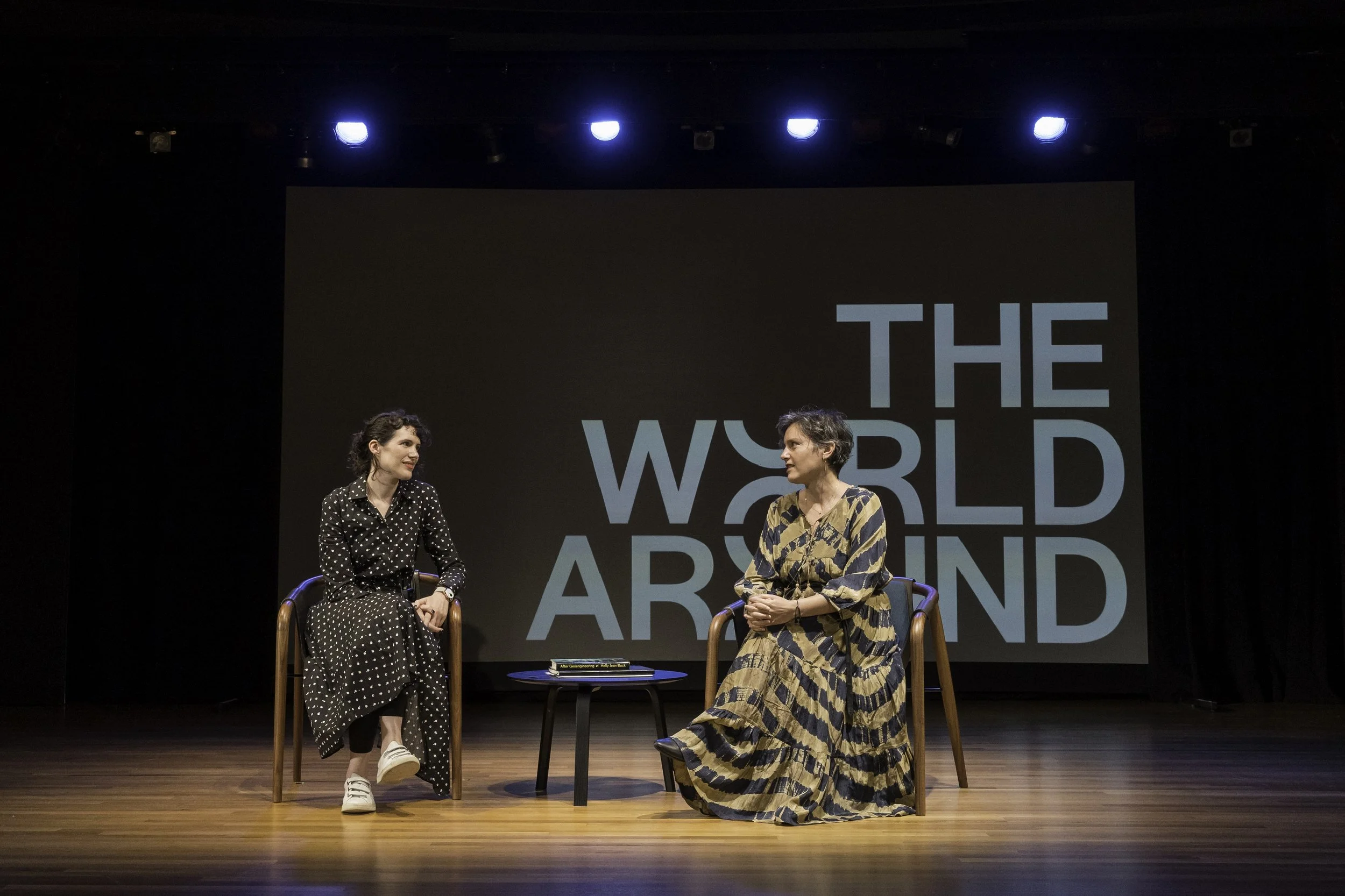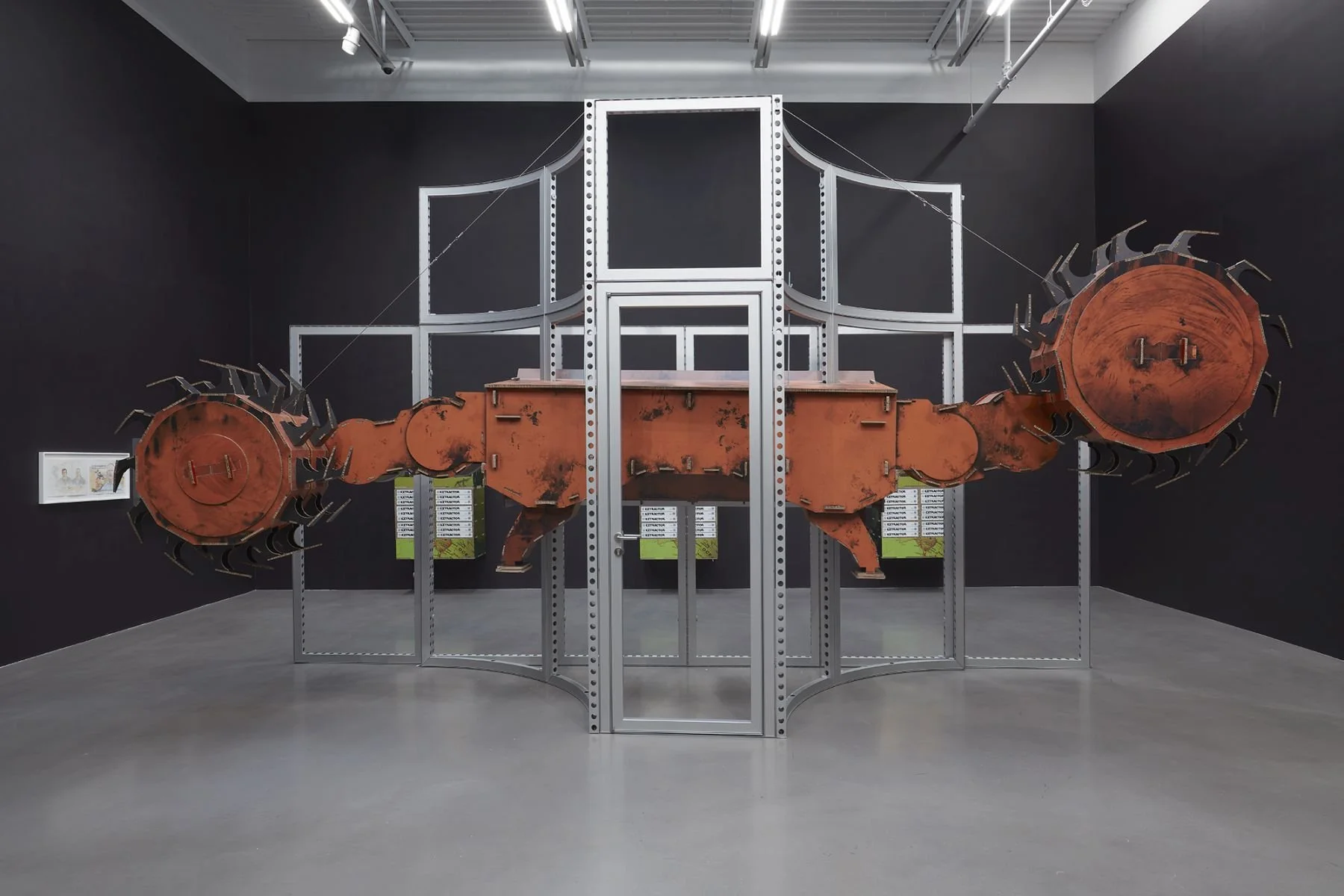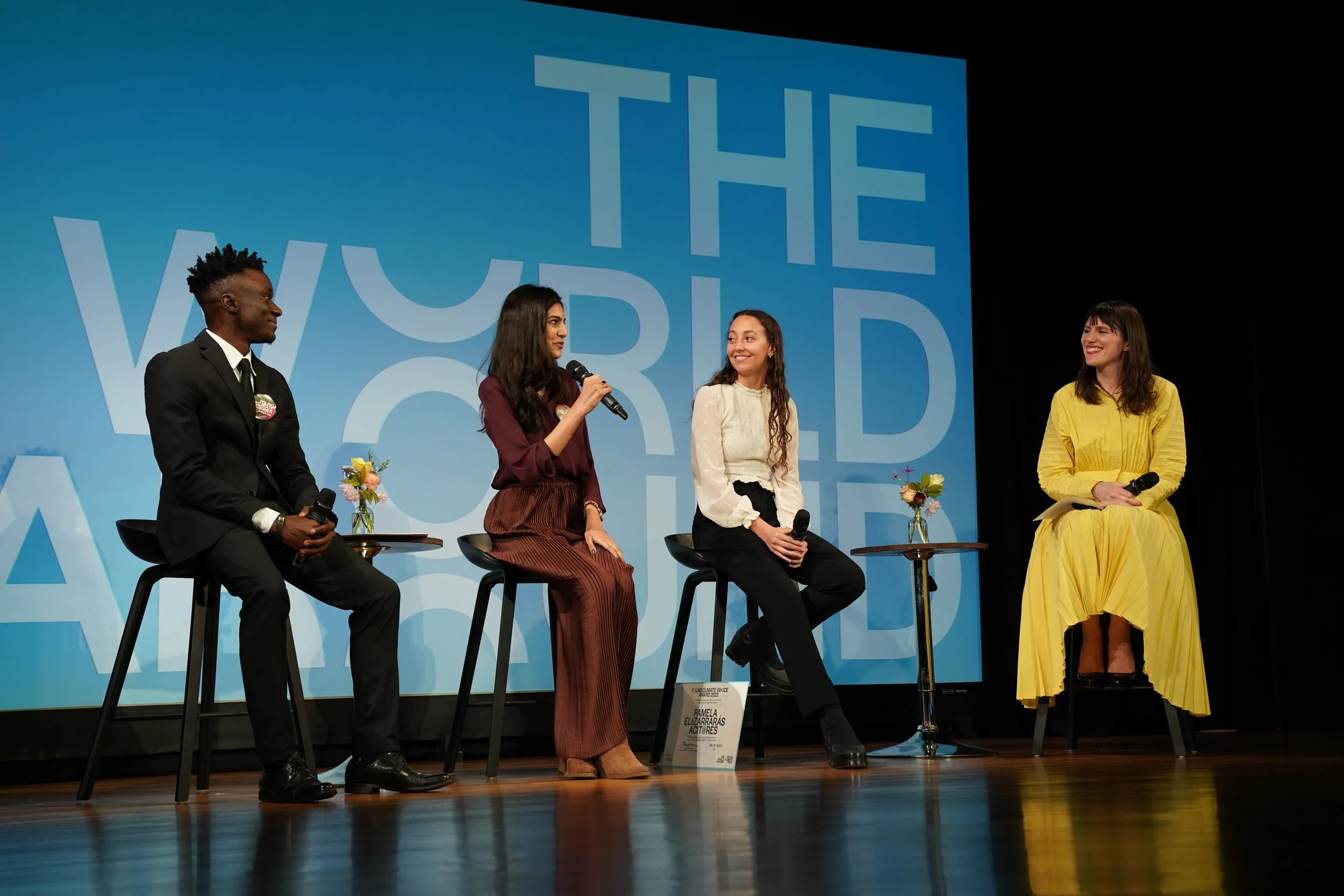Beatrice Galilee
Beatrice Galilee, Portrait by Marco Giannavola.
Beatrice Galilee is an internationally renowned curator, author, and advisor working at the intersection of architecture, design, and culture. She is the founder and executive director of The World Around, a New York-based global platform dedicated to sharing the most progressive ideas in architecture and design from around the world.
From 2014 to 2019, she served as the first curator of contemporary architecture and design at The Metropolitan Museum of Art, where she led exhibitions, commissions, and acquisitions that brought global architectural thinking into dialogue with the museum’s broader collections. Her projects included collaborations with artists such as Wolfgang Tillmans, Cornelia Parker, and Adrián Villar Rojas.
Galilee is the author of Radical Architecture of the Future, published by Phaidon in 2021. Her curatorial experience includes serving as chief curator of the 2013 Lisbon Architecture Triennale, co-curator of the 2011 Gwangju Design Biennale, and co-curator of the 2009 Shenzhen Hong Kong Bi-City Biennale of Architecture and Urbanism. In London, she co-founded The Gopher Hole, an experimental exhibition and project space, in collaboration with Aberrant Architecture.
She began her career in architecture journalism in 2001 as a contributor to Building Design, and has since contributed essays, reviews, and features for major international publications including Wallpaper*, Elle Decor, Icon, Domus, and others.
LUCIJA ŠUTEJ: The World Around is an architecture and design-based platform that emerged as an evolution of your work at The Metropolitan Museum of Art in New York, specifically the conference "A Year of Architecture in a Day." Could we learn about the program and its impact? What topics stayed with you in particular? Were there projects presented or specific topics opened, that you did not have time to address at the Met, and you are still interested in addressing through the work of World Around?
BEATRICE GALILEE: When I arrived at the MET, there was no dedicated contemporary architecture program. While they had occasionally worked with architects on architecture-related exhibitions, monographic shows, and exhibition design, the rest was to be defined. I wanted to create a space for contemporary architecture inside the museum, which didn’t involve having a gallery or collection shows, because those just took too long to create. The time frame varies from two to five years at the institution, and through my previous work on biennials and triennials, I found it important to create a way to achieve projects in a shorter time. My public program work came out of the need to create a footprint, but vitally to be responsive to what’s happening in the world—to try and create a tangible connection between the MET and contemporary production. To bridge an institution with historic objects and to play with the different time scales involved.
Ultimately, the conference emerged as this really great way to share what’s going on in contemporary architecture through the voices of the architects. And the reason that’s important is to share the understanding of what's interesting about architecture and to move beyond showing the buildings. Architecture is all of the things before the building process: the ideas, the making, the tension, the challenges and needs being resolved, the client’s questions, the site specificity, the building itself, the fabrication and construction, and then the aftermath—how did it work? How do people behave? What was the outcome?
As an Architecture Curator inside the Met, I wanted to share my passion by having architects tell the story of their building in 12 minutes—beginning, middle, and end. We would host 25 architects back-to-back talking about their projects, for example Andrés Jaque would share his work about an exhibition, a recent book, or research on AI. The conference produced very interdisciplinary conversations with a global footprint (because the Met does too), and it was really successful because the institution hadn’t done it before. It was essentially a big festival of architecture in one day, and people responded positively! It became something important, I think, for everybody to be part of.
Year of Architecture in a Day, 2019 curated by Beatrice Galilee. Photography courtesy of The Metropolitan Museum of Art.
LŠ: Were there specific topics through presented projects that stayed with you?
BG: For me, the idea was to capture the year in a day—a time capsule. I am thinking of the talks by Freddy Mamani or Elizabeth Diller and Ricardo Scofidio, who shared their work on The Mile-Long Opera. That was very special. But there was also the year 2016, when Wolfgang Tillmans presented his anti-Brexit campaign.
Beatrice Galilee in conversation with Elizabeth Diller and David Lang on The Mile-Long Opera at A Year of Architecture in a Day, 2019 Photography courtesy of The Metropolitan Museum of Art.
LŠ: A living archive.
BG: Exactly! And that’s also what led to the idea for The World Around to continue its activity through the livestream. At the Met, we also put an emphasis on the livestream, and I wanted to keep it going and create accessible videos. So now the videos on The World Around are this living archive—anyone can watch them, share them with students—they’re on YouTube. We want everything to be open and to make everything accessible.
LŠ: You previously also established and led The Gopher Hole, an experimental project space in London. Could we learn more about the institution and what lessons from the programme inform The World Around’s ethos today?
BG: It was a really experimental space, inspired by the Storefront for Art and Architecture in New York, and the Program in Berlin, founded by Carson Chan. I’d applied for Storefront’s director job in 2010 and came second. (laugh) I was living in Berlin at the time and wasn’t sure about moving to New York, but a friend called me and said, “We have this client with a space—want to work together?” (laughs) They were two architects, David Chambers and Kevin Haley, and I was a curator.
We took over this old nightclub under a Mexican restaurant in London’s Shoreditch and we turned it into a white-walled gallery with a bar. We didn’t pay rent and generated money from the bar during talks and openings. What was inspiring was that it enabled us to collaborate— with Domus, Central Saint Martins (degree show auction), and also to open the field of architecture beyond the industry. It wasn’t a good business model, but it was fun. (laugh) We did experimental projects like the “Gopher Gala” during the London Design Festival—sharing what was exciting in London at the time.
The Gopher Hole: Various programs at The Gopher Hole, London 2010-2012 curated by Beatrice Galilee and Aberrant Architecture. Photography courtesy Lynton Pepper.
LŠ: The World Around’s motto—“Architecture’s Now, Near, Next”—addresses timely issues. How do you balance this forecasting with action? Has any project surprised you by becoming overnight near in their urgency?
BG: COVID-19 was the big one! In 2020, we had talks on landscape design and indigenous knowledge—topics that later went mainstream. Architect Shumon Basareven warned about a virus with no cure weeks before lockdown, and many people said they first heard about COVID-19 at our summit. With the lockdowns, we pivoted online fast—we created The Earth Day event (2020) with Dezeen, and later The World Around Summit 2021 with Solomon R. Guggenheim Museum.Projects like Feral Atlas: The More than Human Anthropocene or Emmanuel Pratt’s talk on redlining in Chicago gained urgency during Black Lives Matter. By 2021, BlackSpace’s manifesto highlighted the need for Black voices in urbanism. Representation became central—showing architecture isn’t just older white men but diverse and global.
LŠ: Did you always envision for The World Around to be nomadic— specifically, the summits and events you organize are hosted and produced with a different institutional partner?
BG: I do not see us as truly nomadic—we have a home in New York—but traveling felt essential! In Rotterdam during the Ukraine war, the discussions around conflict were visceral in a way they wouldn’t have been in NYC. Architecture is site-specific—so we go where the conversations are.
LŠ: Four Editions of The World Around Summit were formed through the institutional partnership with Solomon R. Guggenheim Museum - how did it impact the direction and the work of the programme? How did you shape the research themes together?
BG: The partnership with Solomon R. Guggenheim Museum happened at the end of 2020 and was pivotal in expanding the reach and intellectual depth of The World Around. It brought together a globally recognized institution, which during the pandemic was essentially closed for all public programs, and a younger, more agile online broadcast platform—resulting in a cross-pollination of ideas, genres, and media that might not have occurred in isolation. Our collaboration emphasized the urgent role of architecture in responding to global crises, from climate breakdown to social injustice, and that was really led by the Guggenheim’s head of education, Cyra Levenson, and her excellent team.
Beatrice Galilee and Cyra Levenson on stage at the Guggenheim Museum, 2021.
View of Simon Denny’s exhibition “Mine,” 2021, at Petzel, New York. Courtesy the artist and Petzel Gallery.
Unknown Fields, Lithium Dreams, courtesy Karla Gachet/Panos.
We looked for projects that not only represented innovation in form and material, but that asked what is the role of design in repair, regeneration and what forms a new canon of architecture in those extremely unnerving times. The themes were thus formed organically, through shared questions rather than predetermined categories.
LŠ: How do different institutional partnerships shape each edition?
BG: Co-curating is the best part—blending networks and ideas. It’s not unilateral; it’s about learning from others.
LŠ: In 2023, in partnership with the Triennale di Milano and Fondation Cartier, you focused on Radical Repair— an urgency within architecture. What projects particularly inspired you and why? And how do you hope to see them implemented in the industry?
BG: Radical Repair emerged in response to a growing recognition that the tools and frameworks of architecture must evolve to meet the scale of planetary crisis. The program was co-curated with the wonderful curator Béatrice Grenier at Fondation Cartier. It’s a theme rooted in the idea that design can no longer operate within inherited systems of extraction, erasure, and delay. What we explored was a shift in architectural consciousness—a recalibration of priorities from form to consequence, from permanence to resilience. The projects that shaped this edition were working at the level of worldview.
Freddy Mamani’s architectural work with the Aymara communities reorients ideas of modernity and beauty through a culturally grounded, unapologetically local lens. Meanwhile, the Great Green Wall initiative—a 3,000-kilometre ecological corridor across the Sahel—is a profound act of planetary engineering, landscape restoration, and geopolitical imagination. These works don’t gesture at repair; they embody it through systemic intervention and collective authorship.
In Focus Radical Repair, 2023, Speaker Joseph Grima.
In Focus Radical Repair 2023, Speaker Junya Ishigami.
Freddy Mamani El Gallo de Oro, Villa Mercedes, El Alto, Bolivia. Architect: Freddy Mamani. Photo: Tatewaki Nio.
LŠ: Which new institutional partnerships would you like to see?
BG: I’m really interested in deepening our presence in regions where architecture and design are already driving vital cultural and ecological conversations, and building meaningful partnerships with like-minded institutions. I would love to work with museums, universities, design collectives, and even research labs that are experimenting with education, climate resilience, and public space in new ways.
I’m sensitive to ensure that we don’t talk about “bringing” The World Around to any particular region or place—it’s about being invited in, listening, and creating something together that reflects the urgencies and realities of that context.
LŠ: Does the future of the World Around see plans for a permanent home— I am thinking of a school or multidisciplinary lab?
BG: Our website is our home. Physical space isn’t a priority—I actually think it might limit us. Our team works remotely (from London to Argentina), and the biennale-style model (pop-up events) suits our rhythm. That said, I’m not opposed to a kind of temporary permanence—I’d love to expand and continue our work in exhibitions, temporary commissions, and curatorial collaborations. Right now, our focus is on ideas, conversations, and convenings, not on architectural permanence.
LŠ: Through the platform, you are bridging established and emerging voices - supporting cross-learning. Could we look at the work of the Young Climate Prize and the conversations it opened?
BG: The Young Climate Prize is a mentorship program for 25 under-25s that was launched in 2023 out of a deep sense of urgency—but also responsibility. It was clear that young people were being asked to carry the burden of a future shaped by decisions they didn’t make. My generation, and those before me, and the design and building industry writ large have played a role in creating the climate crisis, yet the voices of those who will live longest with its consequences were largely absent from mainstream design discourse.
In many ways, they were disenfranchised from shaping the systems that most directly affect them. So, we created a program to connect youth-led climate initiatives with architects, designers, and thinkers from our network of speakers and participants, transferring knowledge and skills and connecting them to a wider global community. The goal wasn’t career acceleration, but to create a space for intergenerational dialogue, learning, and solidarity between a cohort of under-25s. It’s about designing new systems, not just supporting professional trajectories.
The result has been some of the most meaningful and rewarding work of my career. Our cohort members have gone on to speak at the United Nations, expand their initiatives, and gain recognition on some of the world’s largest stages. But perhaps most profoundly, the Prize has changed our community. We’ve seen mentors rethink their practices after working alongside young activists who are reimagining food systems, restoring landscapes, and decolonizing environmental narratives.
Looking ahead, we hope to see this work embedded into architectural education and practice—moving beyond tokenistic inclusion toward real structural change. The industry must recognize that young people aren’t the “future” of climate action—they are already leading it.
Young Climate Prize 2023 Award Ceremony.
Francesca Norrington, Vladimir Kush.
Mohammed Anowar.
Marilita Qm.
Owen Chiou, photo by Pola Waszczuk.
Young Climate Prize 2023, Joseph Nguthiru working in a Laboratory.
LŠ: What’s next for the organisation?
BG: A priority is growing the Young Climate Prize—connecting architects with youth tackling climate change. It’s about mentorship and designing systems—not just buildings. We’re also exploring podcasts, films, and exhibitions, but we move at “the speed of trust” (per BlackSpace’s manifesto)—only scaling when we can maintain quality!
